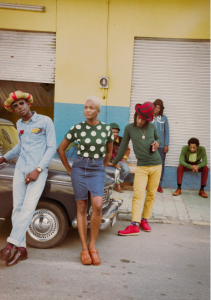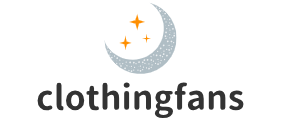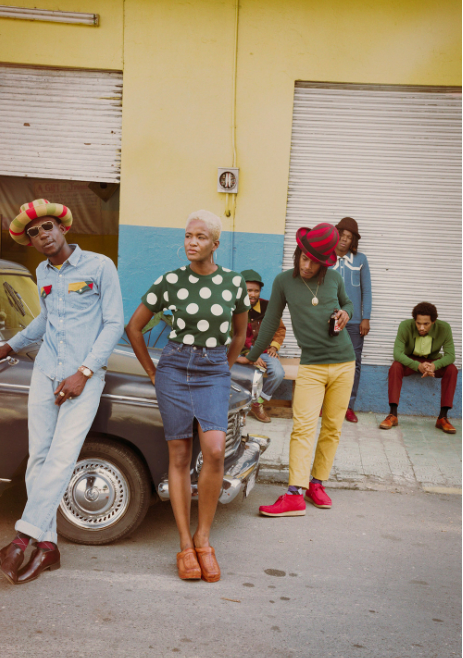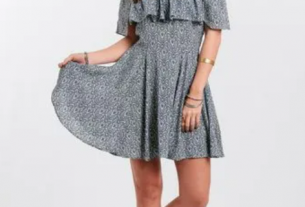In the ever-evolving world of fashion, colors serve as silent storytellers, weaving tales of societal shifts, cultural revolutions, and individual expressions. From the vibrant hues of the psychedelic ’60s to the minimalist tones of the ’90s, each decade has left its indelible mark on the color palette of fashion. Join us on a journey through time as we explore the fascinating color trends that have shaped the sartorial landscape from the 1950s to the present day.

1950s: Pastels and Elegance
The post-war era of the 1950s brought a wave of optimism, reflected in fashion through soft pastels and refined elegance. Women embraced the timeless charm of blush pinks, mint greens, and baby blues, creating a palette that exuded femininity and grace. Men, on the other hand, favored classic neutrals, embracing the suave sophistication of greys and browns.
Key Influences:
- Hollywood glamour and the rise of iconic figures like Audrey Hepburn.
- The emergence of Dior’s “New Look,” emphasizing hourglass silhouettes.
1960s: Psychedelic Explosion
As the ’60s unfolded, fashion exploded into a riot of colors, mirroring the societal upheavals of the time. Psychedelic patterns, bold prints, and vibrant hues took center stage. The youth rebellion found expression in electric blues, neon greens, and hot pinks, reflecting a departure from the conservative ’50s.
Key Influences:
- The counterculture movement, including the Summer of Love in 1967.
- Pop art and the influence of artists like Andy Warhol.
1970s: Earth Tones and Bohemian Vibes
The ’70s ushered in a bohemian era characterized by earthy tones and natural influences. Olive greens, mustard yellows, and rusty oranges dominated the color palette, mirroring a return to nature. The disco fever of the later ’70s added metallics and glittering hues to the mix, creating a diverse and eclectic color landscape.
Key Influences:
- The rise of boho-chic fashion.
- Disco culture and the influence of Studio 54.
1980s: Neon Pops and Bold Contrasts
The ’80s embraced excess, and fashion followed suit with a burst of neon and bold contrasts. Electric blues, neon pinks, and fluorescent greens defined the era. The color-blocking trend gained momentum, with outfits featuring striking combinations that screamed confidence and individuality.
Key Influences:
- The advent of MTV and the influence of music videos.
- The fitness craze, with activewear becoming a fashion statement.
1990s: Minimalism and Grunge
The ’90s witnessed a shift towards minimalism and grunge aesthetics. Neutrals, muted tones, and earthy hues became prominent, reflecting a more relaxed and laid-back approach to fashion. Grunge brought in darker, moodier colors like deep reds, forest greens, and indigos, creating a stark contrast to the vibrant ’80s.
Key Influences:
- The rise of minimalist designers like Calvin Klein.
- The grunge music scene, influencing fashion with an anti-establishment attitude.
2000s: Technicolor Revival
The turn of the millennium saw a resurgence of bold and eclectic colors, marking a departure from the muted tones of the ’90s. A Technicolor palette emerged, featuring bright oranges, electric blues, and futuristic metallics. Fashion embraced a mix of retro references and forward-looking styles, creating a dynamic and visually stimulating era.
Key Influences:
- The rise of technology and the digital age.
- The fusion of vintage and modern elements in fashion.
2010s: Millennial Pink and Beyond
The 2010s brought an era of eclectic color choices, with no single dominant trend. Millennial pink, a soft and muted hue, gained popularity, symbolizing a shift towards inclusivity and gender fluidity. Pastels, bold primaries, and muted tones coexisted, reflecting the diversity of fashion influences.
Key Influences:
- Social media and the democratization of fashion.
- Sustainability becoming a driving force in color choices.
2020s: Sustainability and Personal Expression
As we step into the 2020s, fashion continues to evolve with a focus on sustainability and individual expression. A return to earthy tones, muted neutrals, and nature-inspired colors reflects a growing awareness of environmental issues. Personal expression takes precedence, with individuals embracing a mix of vintage, modern, and culturally diverse influences.
Key Influences:
- The sustainability movement in fashion.
- A celebration of individuality and diverse cultural influences.
Conclusion: A Kaleidoscope of Fashion Evolution
The color trends that have graced the fashion landscape over the decades form a rich and diverse tapestry, mirroring the cultural, social, and artistic influences of each era. From the timeless elegance of the 1950s to the vibrant chaos of the ’60s, and the eclectic mix of the 2000s, each decade has contributed to the ever-evolving kaleidos





